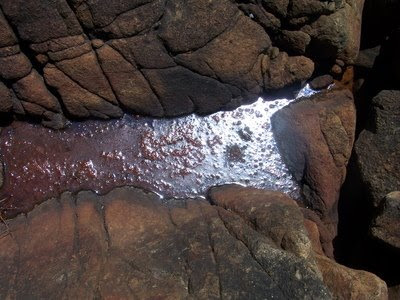
Photo courtesy of fotoforfree.com.au
The rate by which our waters is getting polluted has caused environmentalists to call for more rigorous control measures on water safety monitoring as well public filtration processes. Current proposals in Congress are inclined on transferring the responsibility of ensuring safe and quality water from the Environmental Protection Agency (EPA) to local governments regardless of whether they are ill equipped or insufficiently funded.
There is still uncertainty as to what measure to adopt; whether Congress will require the State and local government to improve on their water purifications techniques and EPA to bear down heavily on standards for possible cancer causing chemicals. The other alternative is for EPA to loosen up and regulate only those chemicals that has the greatest potential risks, like lead. Neither one of the two proposals seems to ensure that the water we will be drinking will be made safe.
Environmentalists feel that there is a need to inform the public as to the real extent of the water pollution issue. This will create an awareness that they should take certain steps in making sure that their water is safe to drink or use. Below are some environmental issues that have rendered our sources of water unsafe:
Polluted Snow/Rain Water Run-offs
We as community dwellers should be the firsts to be responsible about this. Since most of our grounds today are considered as altered lands being covered with concrete and all that, the rain water that falls are hardly absorbed by the ground. Rain, storm, snow, flood waters called as run-offs flow through canals and roads and will eventually reach its destination in streams, rivers, and estuaries. On their way out, these waters will meet all sorts of debris thrown carelessly by humans such as detergents, pet wastes, construction materials, vehicle oil drip offs, salt or fertilizers used for defrosting driveways, and other similar substances disposed of carelessly.
Studies have shown that these water run-offs have contributed largely in polluting our water resources since the grounds they flow on hardly has the capacity to absorb the water. In fact, even groundwater, which is the main source of deep-well water, was likewise tested as contaminated.
Farm Water Run-offs
If you are living in areas near farms and other agricultural areas, research findings have disclosed that they are the major contributors in contaminating the river water. The U.S. Geological Survey has linked nine states, namely: Arkansas, Illinois, Indiana, Iowa, Kentucky, Mississippi, Missouri, Ohio, and Tennessee as having contributed in polluting the Gulf of Mexico. Accordingly, this is due to their farm run-offs which contained high levels of nitrogen and phosphorous. In fact, researchers have described the Gulf of Mexico today as over-fertilized.
Researchers from Yale University and Louisiana State University report that over the past 50 years farm run-offs have pumped rivers with excessive carbon dioxide. This has made not only the rivers acidic but the ocean as well. This is one of the reasons why coral reefs today appear bleached and dying; as a result, there is disruption of marine life.
Atmospheric Pollution
The Earth’s atmosphere now contains levels of carbon dioxide and other greenhouse gasses that have caused temperatures and climate changes. As the atmospheric composition precipitates and falls as rainwater or snowfall, a large part of it goes back into the ocean. The quality of water that goes back into the ocean is now contaminated with carbon dioxide and other greenhouse gasses including methane. Methane is said to be several times more potent than carbon dioxide.
Chlorine as Medium for Water Disinfection
Chlorine is actually not a pollutant and is intentionally infused in our water to act as disinfecting agent. However, only a few of us are aware that the use of chlorine with chloroform as its main composition is cancer causing, which is now receiving much attention from the EPA.
Not all Bottled Water are Safe
After knowing all sources of pollutants listed above, we will then resort to bottled water as our presumed safety measure to ensure that our drinking water is safe. Often promoted as “safer” and “chlorine free,” it may come as a surprise to you that about a third of bottled water in the U.S. come from public water supplies, based on reports. On top of that, consumers are not aware that regulations that govern the preparation of these bottled water are said to be less than strict, hence you are not sure if what you are drinking is safer than what you obtained from the faucet.
Our utmost concern is the safety of our drinking water by using home filtration. It can at least provide us the assurance that the water we are drinking went through proper filtration and disinfecting processes. In addition, we could probably refer to certain sites such as “Your Guide to Green” at this link http://clickserve.cc-dt.com/link/click?lid=41000000027385852 to get ideas on how we could ensure quality and safety in the water we drink.
Article source: http://ezinearticles.com/?id=1913638

















